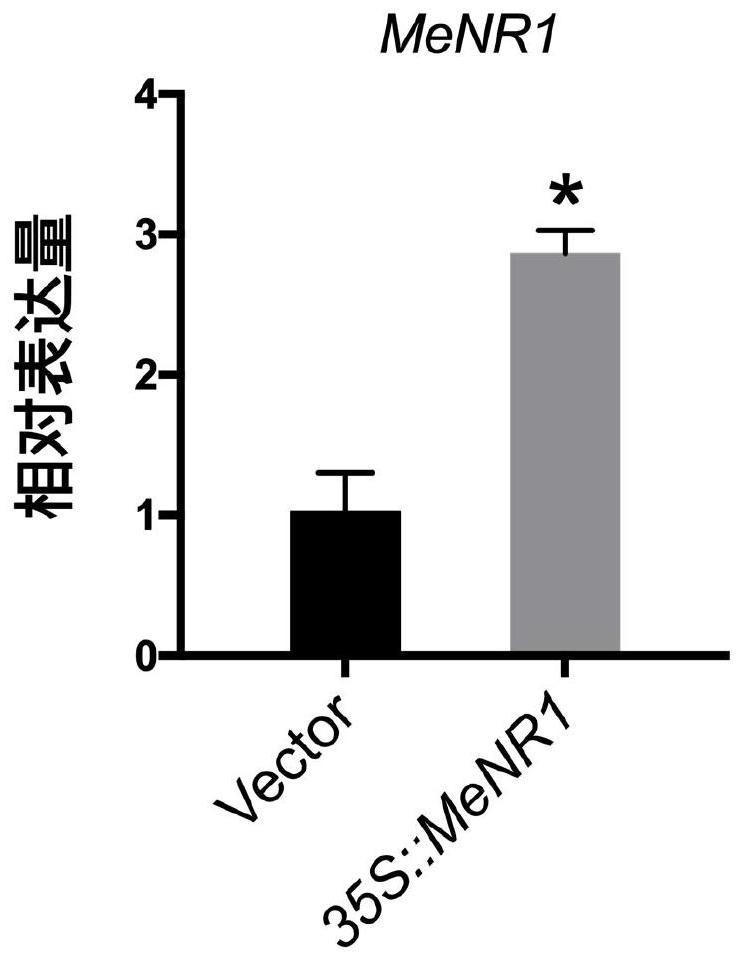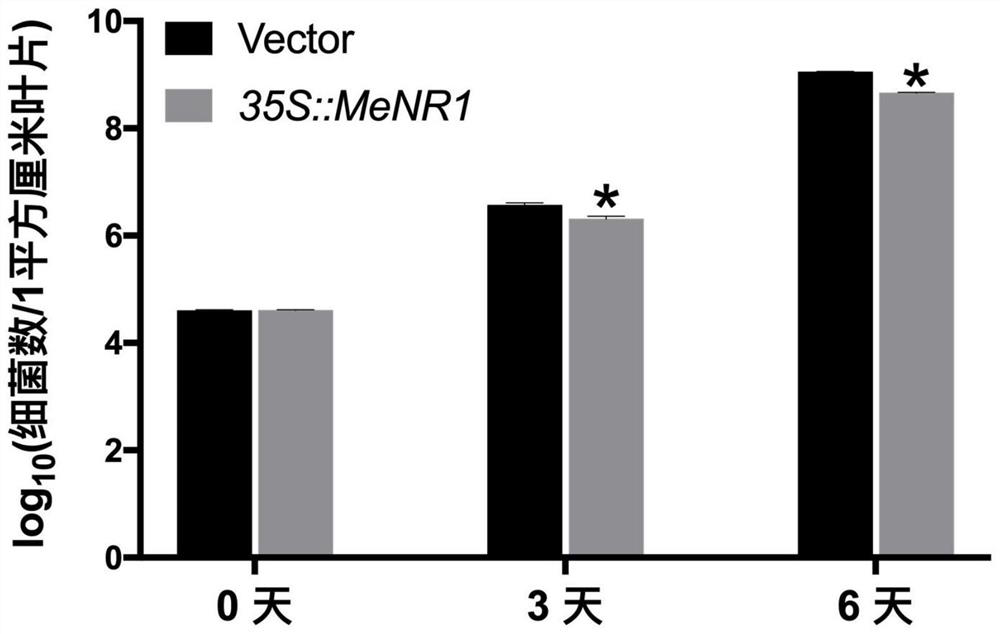Construction and disease resistance application of a cassava nitrate reductase gene and its overexpression vector
A technology of overexpression and reductase, applied in the field of plant genetic engineering to achieve the effect of enhancing the expression level
- Summary
- Abstract
- Description
- Claims
- Application Information
AI Technical Summary
Problems solved by technology
Method used
Image
Examples
Embodiment 1
[0025] Embodiment 1: Construction of cassava MeNR1 gene overexpression vector
[0026] (1) Cloning of cassava MeNR1 gene CDS sequence
[0027] Take an appropriate amount of cassava leaves of Huanan No. 124 and place them in a mortar cooled by liquid nitrogen, add an appropriate amount of liquid nitrogen, and grind the cassava leaves into fine powder. Root Biochemical Technology (Beijing) Co., Ltd., the same below), extract cassava total RNA. A protein detector (DM650BECKMAN, MSA) was used to measure the absorbance value of RNA at 260nm and 280nm and the concentration of RNA, and the purity of RNA was detected by 1.5% (mass volume ratio) agarose gel electrophoresis. According to the instructions of the reverse transcription kit (purchased from Thermo Fermentas, the same below), RNA was reverse-transcribed into cDNA and stored in a -40°C refrigerator for later use.
[0028]By designing primers, we obtained the full-length sequence of the cassava MeNR1 gene for the first time. ...
Embodiment 2
[0033] Example 2: Application of pBI21-MeNR1 Gene Overexpression Vector in Cassava Disease Resistance
[0034] (1) cassava material preparation:
[0035] A. Seed selection: Choose a variety with good adaptability and high yield, and choose Huanan 124 for planting. Generally, it is better to choose cassava stems that are fully mature, suberized, thick and thick, with complete epidermis and axillary buds, thick and obvious bud eyes, no pests and diseases, no damage, fresh and solid main stems. Old and young stems should be avoided.
[0036] B. Acceleration of germination: before planting, cut off the stem with a sharp knife. The incision should be kept flat so as not to detach the epidermis and not damage the axillary buds. Each section is 13-20cm long, leaving 3-5 strong axillary buds. Put the selected stem with axillary buds facing upwards, and immerse the bottom end in water for 1-2 cm to ensure that the bottom end is moist, and place it for 3-4 days until new buds emerge. ...
PUM
 Login to View More
Login to View More Abstract
Description
Claims
Application Information
 Login to View More
Login to View More - R&D
- Intellectual Property
- Life Sciences
- Materials
- Tech Scout
- Unparalleled Data Quality
- Higher Quality Content
- 60% Fewer Hallucinations
Browse by: Latest US Patents, China's latest patents, Technical Efficacy Thesaurus, Application Domain, Technology Topic, Popular Technical Reports.
© 2025 PatSnap. All rights reserved.Legal|Privacy policy|Modern Slavery Act Transparency Statement|Sitemap|About US| Contact US: help@patsnap.com


